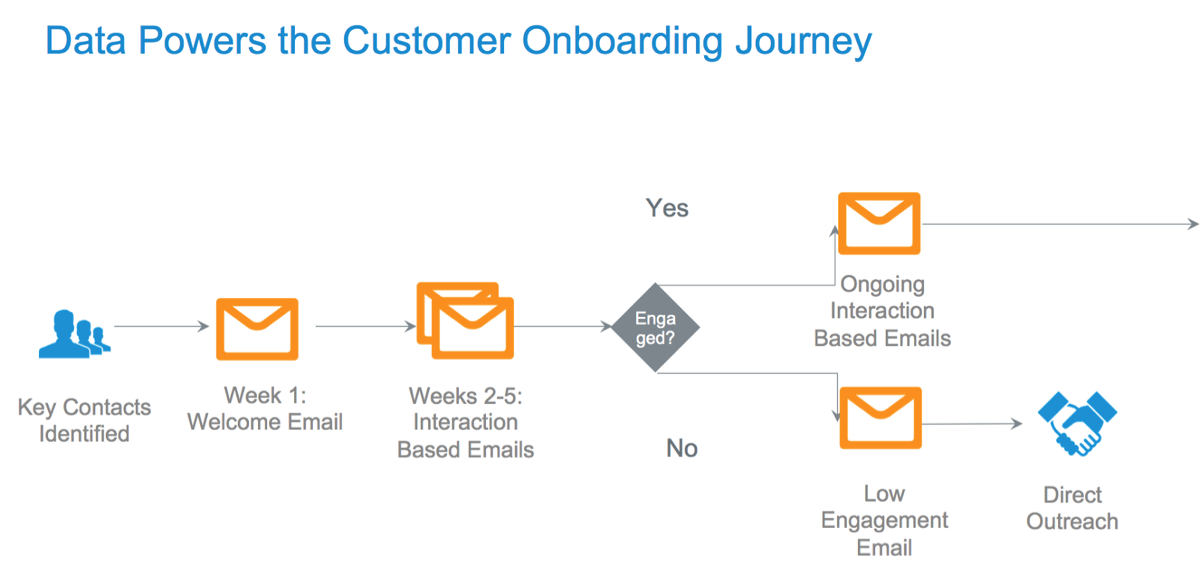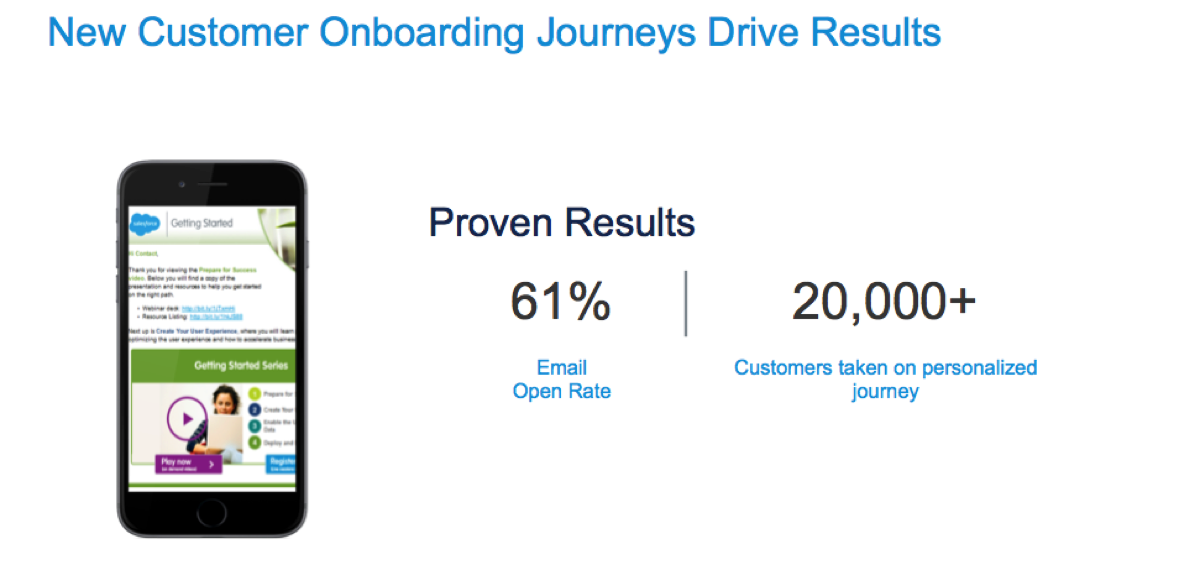Inside View: How Salesforce Uses Marketing Cloud for Customer Onboarding
OREANDA-NEWS. February 10, 2016. Onboarding is one of the most critical phases of the customer lifecycle. It sets the tone for the relationship, and done effectively, helps your customers quickly gain value from your products or services. Sounds simple, right?
It’s important to remember that every customer is unique. Each will have different preferences, learning styles and senses of urgency. Some will prefer video...others learn from text tutorials. Some will be eager to consume content...a few need a bit of prodding. As with all good marketing, a one-size-fits-all-approach isn’t the answer.
Welcome to Salesforce, Let’s Get Started
An average of 8,000 times a quarter, Salesforce is in the fortunate position to onboard new customers. We love every contract that gets signed--and are committed to getting every customer off to a good start. Enter our Success Services team!
Success Services delivers programs, technology and strategy to encourage businesses to become customers for life. Their mission is to help every customer effectively adopt and get maximum value from their investment in Salesforce solutions.
While the team has always strived to get customers up-and-running as effectively as possible, it was difficult to do at scale. Full disclosure: They had a hard time personalizing content for each customer and it was tough to track if and how content was being consumed.
Then they took a page from their customers’ playbook and adopted some technology of their own. Marketing Cloud.
Onboarding at Scale
As a first step, the Success Services team established a few primary goals: Orient customers to available training resources, deliver timely, personalized assets to help them be successful, and provide outreach to assist customers who were not finding success through self-service materials.
Next, they catalogued all assets such as webinars, videos, in-app tutorials, and documentation--and then developed a strategy for cadence and communications copy. They then used Journey Builder to plan and personalize how and when each interaction would be delivered through Marketing Cloud.
Data Enables Personalization
To determine who should receive the initial communications at each organization, Marketing Cloud pulls data from each new customer’s record in Sales Cloud. It also captures the name of the account executive who worked on the deal.
The preliminary customer contact is typically the Salesforce Admin. Shortly after the contract is signed, they receive a Welcome Email with two calls to action: Sign-up for the Welcome to Salesforce Webinar, and click to join the Success Community where they can engage with other customers. To give the email a familiar feel, the send name is configured to come from their account executive.

Engagement Drives Next Step
What happens next--and hereafter in the journey--depends on how recipients engage with the Welcome Email and each subsequent communication. For example, if they attend the most recently recommended webinar, we’ll follow up with the next webinar in the series. If they didn’t attend, we’ll customize the message to encourage them to do so.
Throughout the weeks following the Welcome Email, new customers will continue to receive a series of emails pointing them to increasingly advanced webinars, as well as resources like videos and walkthroughs. Each communication is analyzed to determine whether the customer took the recommended action.
If they are engaged with the content and their deployment is going well, these newer customers continue hearing from our Success Services team in this way for a month or until they are up and running successfully on Salesforce. Eventually they are put on a journey to expand their use of our products and solutions.
If we detect low engagement, as well as low usage patterns with their Salesforce solution, they’re sent on a different journey. If this doesn’t rectify the issue, a case is auto-created and assigned to a Salesforce Success Expert who reaches out to help. It’s a great example of pairing sales, marketing and usage data to quickly triage a customer in distress.
Results Benefit Everyone
Though it’s relatively new, the customer onboarding program has seen amazing results. Over 20,000 customers have been taken on personalized journeys, and emails across the journeys average an amazing 61% open rate.




Комментарии